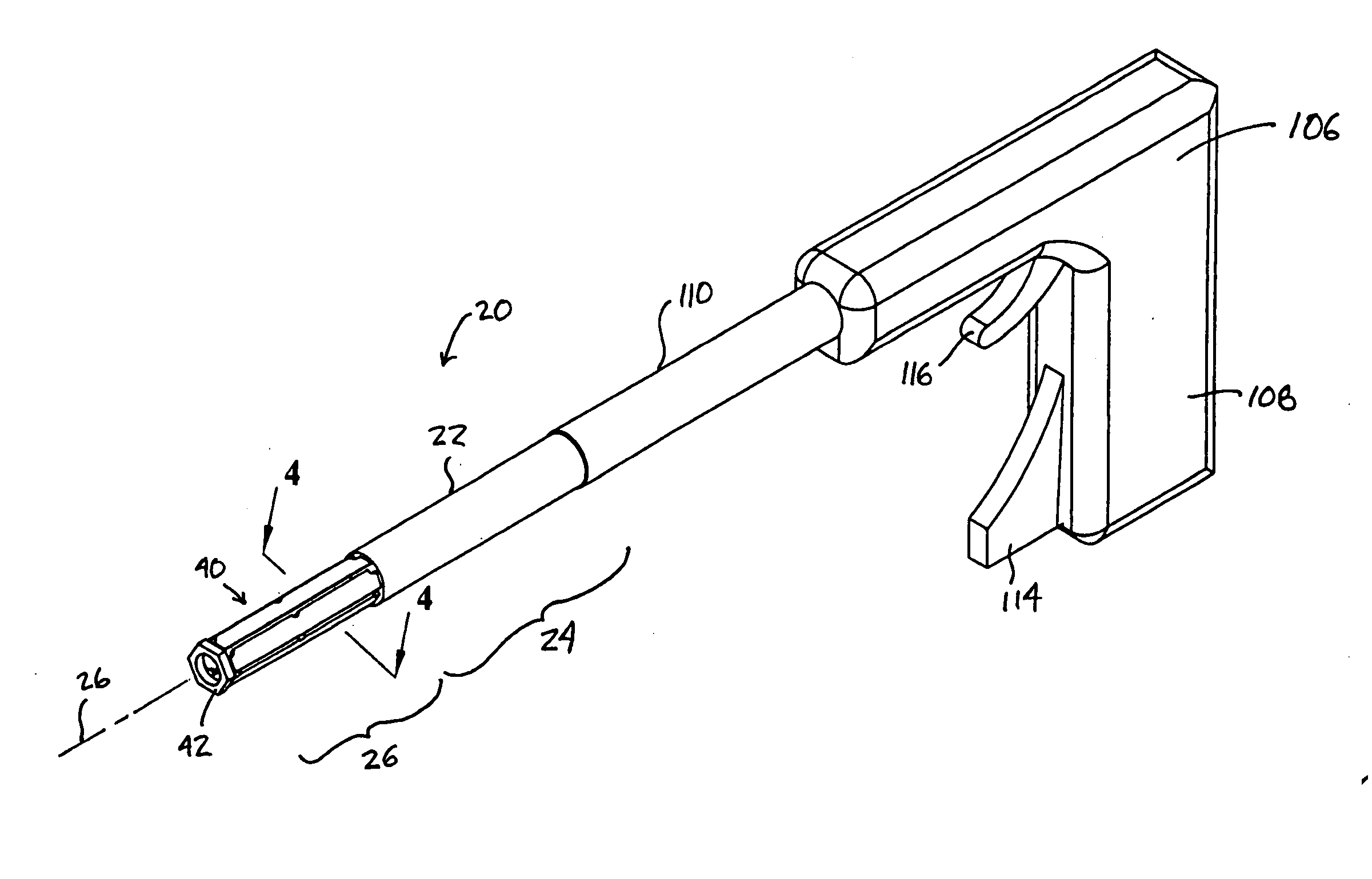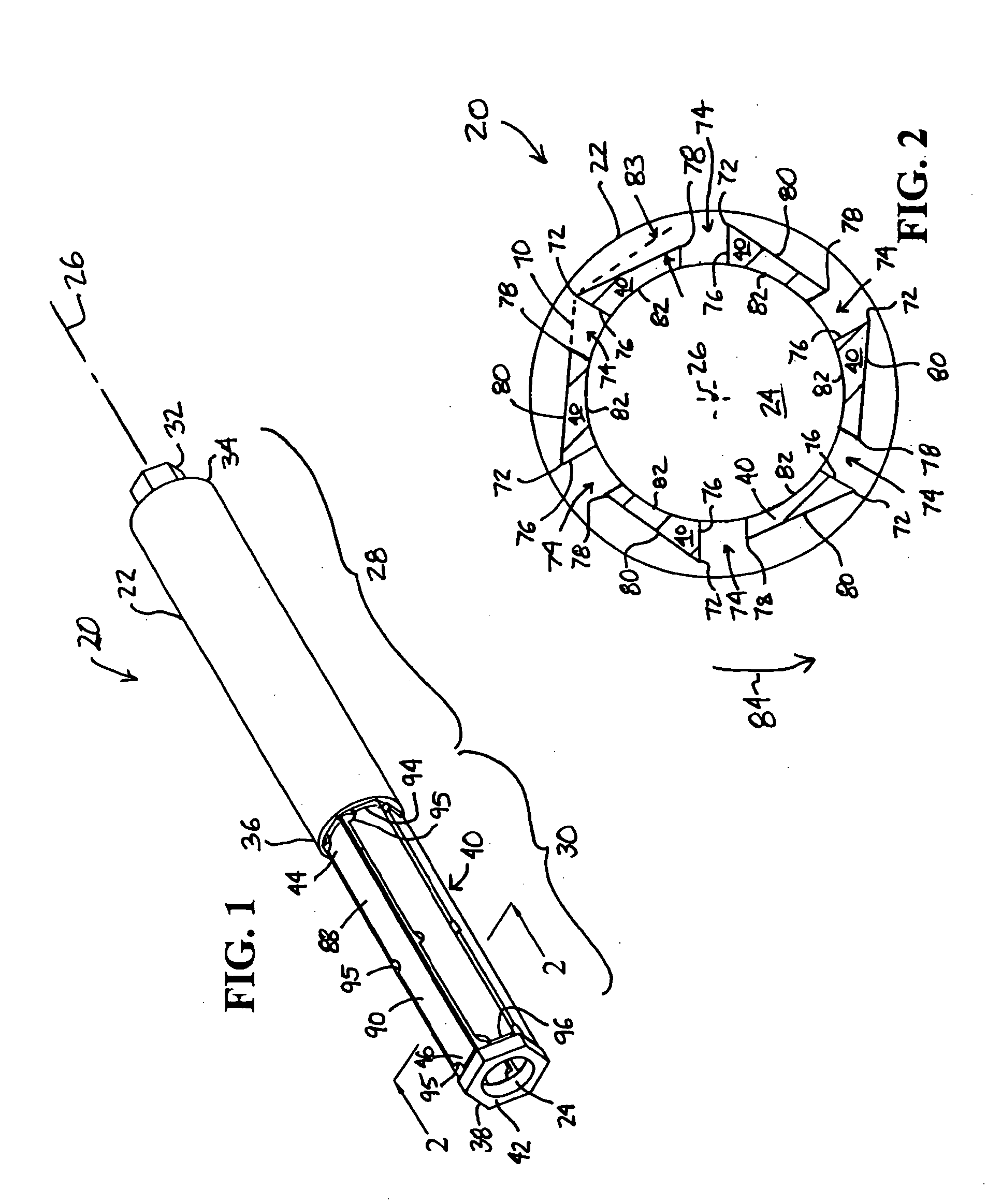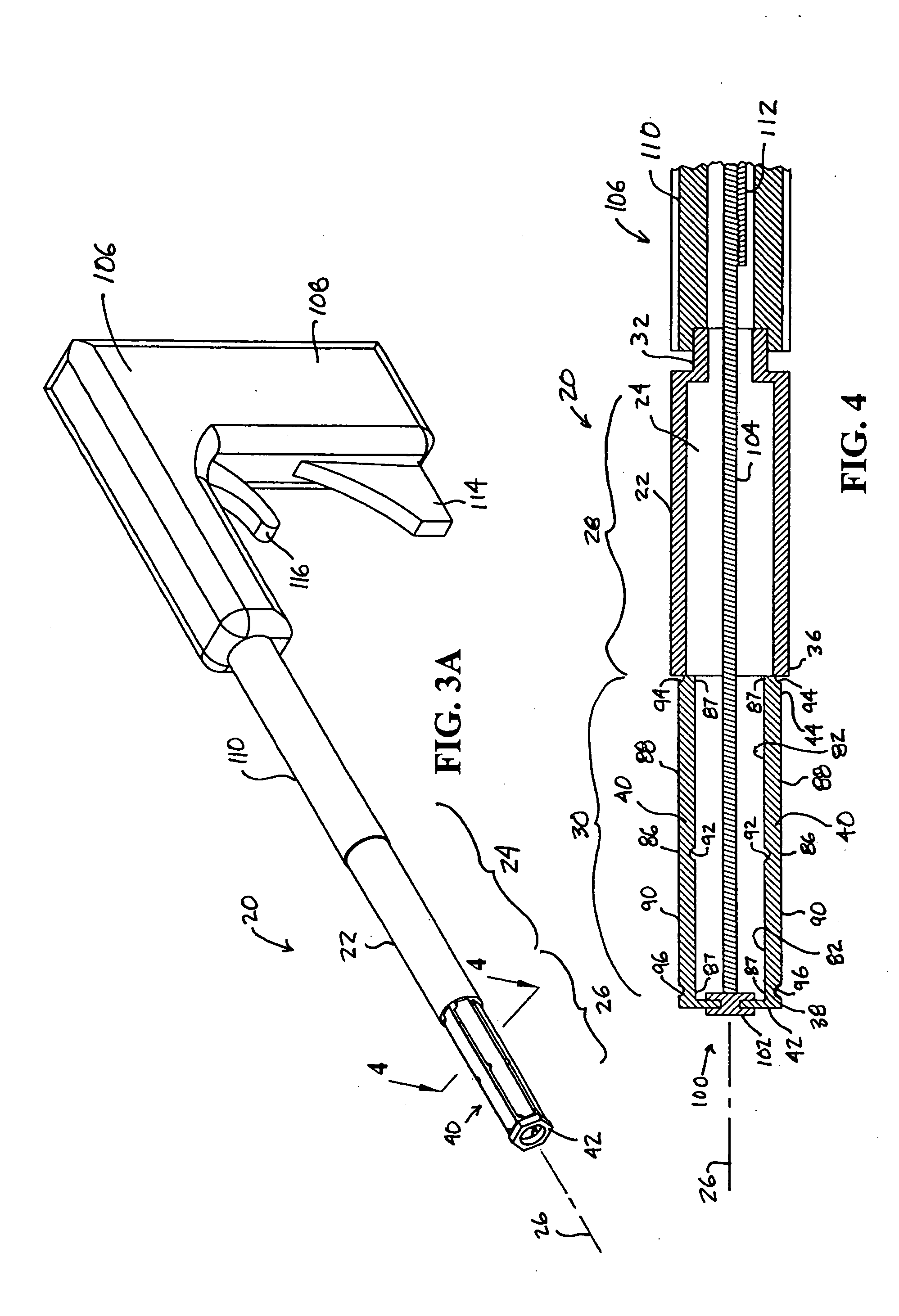Expandable reamer
a reamer and expandable technology, applied in the field of reamers, can solve the problems of lengthening the healing and rehabilitation time of patients after surgery, and achieve the effect of prolonging the healing time and rehabilitation tim
- Summary
- Abstract
- Description
- Claims
- Application Information
AI Technical Summary
Benefits of technology
Problems solved by technology
Method used
Image
Examples
Embodiment Construction
[0032] The embodiments disclosed below are not intended to be exhaustive or limit the invention to the precise forms disclosed in the following detailed description. Rather, the embodiments are chosen and described so that others skilled in the art may utilize their teachings.
[0033] First exemplary expandable reamer 20, shown in FIG. 1, is formed from cannulated shaft 22 having bore 24 therethrough along longitudinal axis 26. Reamer 20 includes shank 28 and reamer body 30. Chuck end 32 for driving reamer 20 is located at proximate end 34 of shank 28. Reamer body 30 extending from distal end 36 of shank 28 to distal end 38 of reamer 20 includes deformable cutting blades 40 and ring 42. Blades 40 are coupled at proximate end 44 to distal end 36 of shank 28. Blades 40 are also coupled at distal end 46 to ring 42. Advantageously, as ring 42 is proximally drawn toward proximate end 32 of reamer 20, at least a portion of blades 40 extend radially outward from longitudinal axis 26, thereb...
PUM
 Login to View More
Login to View More Abstract
Description
Claims
Application Information
 Login to View More
Login to View More - R&D
- Intellectual Property
- Life Sciences
- Materials
- Tech Scout
- Unparalleled Data Quality
- Higher Quality Content
- 60% Fewer Hallucinations
Browse by: Latest US Patents, China's latest patents, Technical Efficacy Thesaurus, Application Domain, Technology Topic, Popular Technical Reports.
© 2025 PatSnap. All rights reserved.Legal|Privacy policy|Modern Slavery Act Transparency Statement|Sitemap|About US| Contact US: help@patsnap.com



